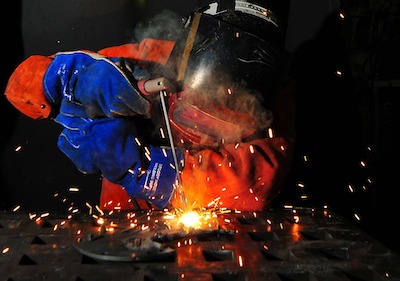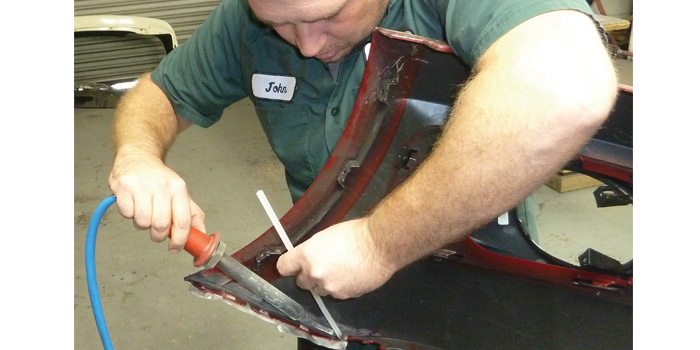Expert welding repair tips from Belgrade Welding professionals
Usual Welding Repair Issues and Just How to Address Them Successfully
Welding repairs typically experience a series of issues that can jeopardize the honesty of the final item. Usual issues consist of insufficient penetration, porosity, and misalignment, to name a few. Each flaw provides unique difficulties that need specific strategies for resolution. Understanding these problems is necessary for welders intending to improve their end results and skills. This conversation will certainly discover these common welding fixing concerns and efficient methods to address them.
Poor Penetration
Insufficient infiltration happens when the weld metal fails to completely fuse with the base product, causing weak joints and potential structural failures. This problem typically stems from insufficient heat input, wrong electrode angle, or improper welding speed. Welders might come across insufficient penetration because of a mistake of the essential specifications for a particular product density or kind. Furthermore, contamination on the base product's surface can hinder efficient bonding, intensifying the trouble. To attend to inadequate infiltration, welders should guarantee suitable setups on their devices and keep a tidy job surface area. Regular inspection of welds is recommended to recognize any shortages early, permitting prompt improvements and the prevention of jeopardized structural stability in bonded settings up.
Porosity
Porosity is an usual problem in bonded joints that materializes as tiny gas bubbles caught within the weld steel. This issue can compromise the stability of the weld, causing decreased strength and possible failure under anxiety. Belgrade. Porosity usually develops from contamination, dampness, or incorrect welding strategies, which permit gases to run away into the molten weld pool. To address porosity, welders need to ensure appropriate surface preparation, maintain a tidy working setting, and use suitable welding specifications. Additionally, picking the ideal filler product and securing gas can mitigate gas entrapment. Routine examination and screening of welds can help determine porosity early, ensuring prompt corrective activities are taken, thus preserving the quality and dependability of the welded framework
Misalignment
Imbalance in welding can occur from numerous elements, consisting of improper setup and thermal growth. Recognizing the origin creates is necessary for efficient resolution. Several modification strategies are available to straighten components and ensure structural stability.
Root causes of Misalignment
Welding imbalance commonly stems from a selection of underlying concerns that can endanger architectural integrity. One primary cause is inappropriate fit-up of components prior to welding, which can result in gaps and irregular surface areas. Variations in thermal growth throughout the welding procedure can likewise lead to distortion, especially if the products being signed up with have various coefficients of development. Furthermore, insufficient clamping and fixturing might fall short to hold elements firmly in location, resulting in activity during welding. Poorly maintained tools, including welding devices and devices, may introduce inconsistencies in the weld bead, further adding to imbalance. Lastly, operator mistake, originating from insufficient training or experience, can also play a significant duty in creating misaligned welds.
Correction Methods Offered
Attending to misalignment successfully requires a mix of corrective strategies customized to the details concerns at hand. One usual approach is using jigs or components to hold components in the correct position during welding, making sure consistent positioning. Additionally, pre-heating the products can assist reduce distortion and boost fit-up. For significant misalignment, mechanical realignment methods, such as making use of hydraulic jacks or clamps, can be used to correct the placement prior to welding. Post-weld heat treatment may also be essential to soothe stresses triggered by imbalance. Finally, careful inspection and change throughout the setup stage can stop misalignment problems from ending up being significant problems, promoting a smoother welding process and improving general structural honesty.
Distortion
Distortion is an usual challenge in welding that can arise from numerous elements, including uneven cooling and heating. Comprehending the sources of distortion is important for executing effective avoidance strategies. Addressing this concern not only improves architectural stability but additionally boosts the total top quality of the weld.
Reasons for Distortion
When subjected to the intense warmth of welding, products commonly go through click site modifications that can lead to distortion. This phenomenon mainly emerges from thermal expansion and tightening during the welding process. As the weld location warms up, the material increases; upon cooling, it gets, which can create internal stresses. On top of that, irregular home heating throughout a work surface can aggravate these stresses, causing bending or bending. The kind of material likewise plays a significant function; metals with varying thermal conductivity and coefficients of expansion may react in a different way, causing unforeseeable distortions. Inadequate joint design and poor fixturing can contribute to imbalance during welding, enhancing the chance of distortion. Comprehending these reasons is essential for efficient welding repair service and prevention methods.
Prevention Techniques
Effective prevention strategies for distortion throughout welding concentrate on regulating heat input and ensuring appropriate joint design. Preserving a consistent warmth input assists to reduce thermal development and contraction, which can result in distortion. Utilizing strategies such as pre-heating the work surface can additionally reduce the temperature level slope, advertising uniform home heating. Additionally, picking ideal joint styles, such as T-joints or lap joints, can improve security and minimize tension focus. Applying appropriate fixturing to safeguard the work surfaces in position even more help in preserving placement throughout the welding procedure. Ultimately, staggered welding series can disperse warmth much more evenly, preventing localized distortion. By using these strategies, welders can significantly lower the probability of distortion and boost the total top quality of their welds.
Splitting
Fracturing is a common problem experienced in welding repair services, frequently arising from various variables such as incorrect cooling prices, product selection, or poor joint prep work. The event of fractures can considerably compromise the honesty of the weld, bring about possible failings throughout operation. To address this issue, welders need to initially analyze the source, making sure that products work and properly picked for the specific application. In addition, regulating the air conditioning rate during the welding process is necessary; fast air conditioning can cause tension and lead to cracking. Appropriate joint style and prep work additionally add to minimizing the risk. Applying these approaches can enhance weld quality and durability, eventually lowering the possibility link of splitting in completed weldments.

Insufficient Fusion
A considerable concern in welding repair work is insufficient combination, which happens when the weld steel does not adequately bond with the base product or previous weld passes - Belgrade. This flaw can result in weak points in the joint, potentially jeopardizing the integrity of the welded structure. Elements adding to insufficient fusion include not enough warmth input, inappropriate welding strategy, and contamination of the surface areas being joined. To address this concern properly, welders must assure correct pre-weld cleansing and surface prep work, in addition to adjust their welding criteria to accomplish adequate infiltration and blend. Normal inspection during the welding process can likewise aid identify insufficient fusion early, permitting prompt restorative procedures to boost the total high quality of the weld
Overheating
While welding fixings can boost structural integrity, overheating presents a substantial obstacle that can result in material degradation. Too much warm during welding can alter the mechanical residential or commercial properties of steels, resulting in decreased strength, raised brittleness, and bending. This phenomenon is especially crucial in high-stress applications where structural reliability is paramount. Determining getting too hot can involve aesthetic evaluations for staining or distortion, along with keeping an eye on temperature during the welding process. To mitigate the risks related to overheating, welders should employ suitable methods, such as regulating warmth input, readjusting traveling speed, and utilizing suitable filler products. Additionally, applying pre- and post-weld heat treatments can aid restore product properties and improve the general top quality of the fixing, guaranteeing lasting performance and safety and security.
Frequently Asked Concerns
What Are the Common Indications of a Welding Defect?

How Can I Check My Welds for Top quality?
To test welds for top quality, one can make use of aesthetic evaluations, ultrasonic screening, and radiographic techniques. Each method assures architectural honesty, identifies issues, and validates adherence to defined standards, eventually improving the dependability of the bonded joints.
What Safety and security Precautions Should I Take While Welding?
When welding, one must focus on security by putting on proper personal safety devices, making certain proper air flow, protecting combustible materials away, keeping a tidy work space, and understanding surroundings to stop injuries and crashes.
Can I Fix a Weld Without Redoing the Entire Joint?
Repairing a weld without redoing the whole joint is possible, depending on the damages (Montana Mobile Welding and Repair Fabrication). Strategies such as grinding, adding filler product, or utilizing a welding procedure can efficiently attend to particular problems while preserving the bordering framework
What Devices Are Essential for Reliable Welding Repair Works?
Necessary devices for effective welding repair services consist of a welding machine, cable brush, grinder, protective equipment, clamps, and filler materials. Each tool plays an essential role in making certain quality and security during the repair work procedure. Porosity commonly emerges from contamination, moisture, or improper welding methods, which permit gases to leave into the liquified weld swimming pool. Badly kept equipment, including welding machines and devices, may introduce variances in the weld grain, further adding to misalignment. When subjected to the extreme heat of welding, products frequently undertake adjustments that can lead to distortion. Splitting is an usual concern experienced in welding repair services, typically resulting from numerous variables such as incorrect air conditioning prices, material option, or inadequate joint prep work. A considerable issue in welding fixings is incomplete fusion, which happens when the weld steel does not adequately bond with the proline welding base material or previous weld passes.